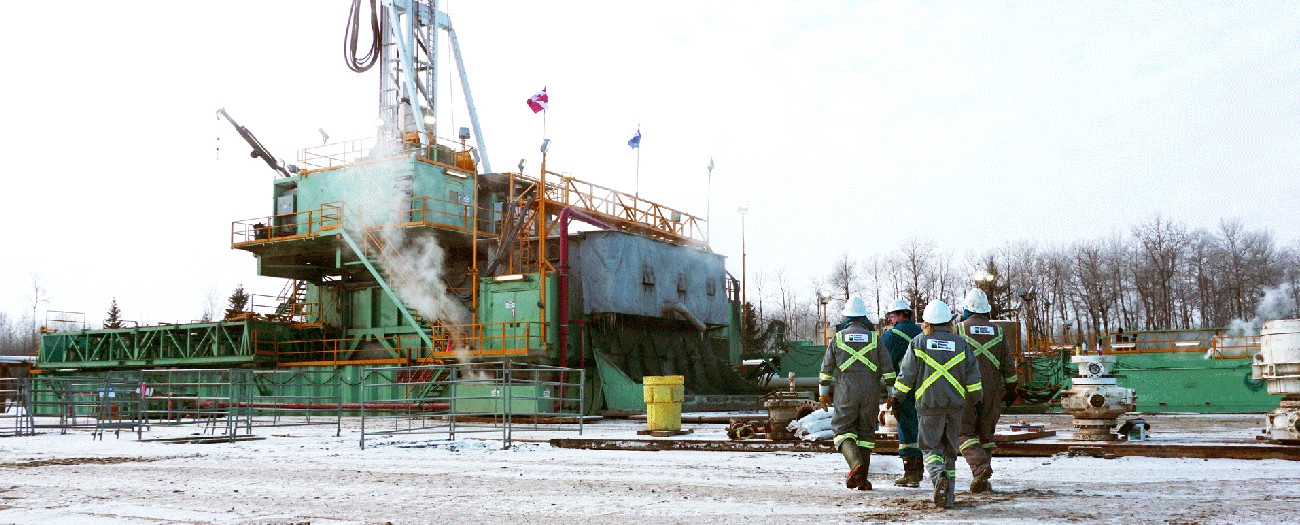Alberta’s oilpatch springs to life during the coldest months of the year
Alberta - March 01, 2017When the Alberta Energy Regulator’s (AER’s) Bonnyville field centre’s manager says “it’s gangbusters up here” on a routine call, you pay attention. Especially when it’s during one of Alberta’s longest, deepest downturns in decades.
What Colin Woods meant when he uttered those words was that there’s a bustle of activity happening around the town of 7000—roads being constructed, trucks passing through town hauling heavy equipment, powerlines going up, water trucks and tankers on the roads, crews coming in, and the hotel parking lots filling up with workers’ trucks. In other words, things were picking up with vigour.
Frozen Solid
Unlike other resource sectors, when the air turns bitter cold and the ground freezes, that’s when the oil and gas industry is at its busiest. This time of year is known as the “winter drilling season,” which runs from November to April. And according to Woods, “winter drilling is not only a thing,” in Alberta’s northeastern region, “it’s the thing, as it means more oil and gas development.”
Sean Humphreys, one of the seven inspectors working out of the AER’s Bonnyville Field Centre further confirms Woods’ observations.
“We’re only a few months into the winter drilling season and we’re already close to reaching the same number of wells drilled as last season,” explains Humphreys. “There is a lot of exploration going on this year.”
The reason winter drilling is the thing is that when the ground freezes solid, operators can actually bring in the big trucks that haul the heavy equipment used in drilling operations without worrying about tearing up the landscape. When temperatures are warmer and the ground is soft, rigs, trucks, and other equipment will sink into the muskeg and damage the land.
Even during the rugged winter, companies must take care to safeguard the areas where they work. They are required to ensure that the roads they make to access drilling sites are wide enough for the traffic, that the vehicles coming and going from the sites keep to designated roadways, that matting or ice roads—the process of layering the roads with thick ice—are used to protect the ground, and that trucks use drip mats to catch any spills that may occur.
Small Footprints
There is a common misunderstanding about the footprint these operations leave. Some envision huge parcels of land being cleared and drilling rigs dotting the land as far as the eye can see, but that’s not the case with many oil sands exploration (OSE) programs. In fact, the space needed to drill down several hundred metres to get a core sample is surprisingly small—and a core sample is the goal of an OSE operation because the sample will determine the presence and quality of oil.
Accessing an operation this time of year in the northeastern part of the province, which produces 80 per cent of Alberta’s oil, is like driving through a Christmas card; it often requires driving deep into the bush, along roads that are thick with frost-covered trees and barren snowy fields. Once you reach the site, you see a sole drilling rig, a few trucks, and a handful of trailers that serve as the crew’s living quarters. It’s all very temporary, tidy, and compact. And in a few days, once the core sample has been captured, it will all be gone, the freshly drilled well will be filled in with cement, and the site will be ready for reclamation.
Reclaiming Takes Time
Returning the land to as close to the way it was before the work began, or as the Environmental Protection and Enhancement Act states, “equivalent land capability,” takes time. But the process actually begins long before drilling even starts. It begins with an application—which must include a reclamation and remediation plan—to the AER.
Reclamation plans must be approved by the AER before exploration begins. This means a lot of planning and calculated steps for the companies. Everything on the landscape—the trees, bush, and soil—must be pushed back from the drilling area, but not removed from the site, so it can be pulled back over the site when the project is completed.
During the 2015/16 winter drilling season, the AER received 176 applications for OSE programs, but this year’s numbers are already at 132, supporting Woods’ and Humphreys’ observations that business is busy in the north. “I don’t know what this all means, exactly,” says Humphreys of the increase, “but these numbers are encouraging.”
So while the temperature dips leave us reaching for more layers and a warm blanket, the colder it is, the better it is for Alberta’s oil and gas industry.
Cassie Naas, Writer


